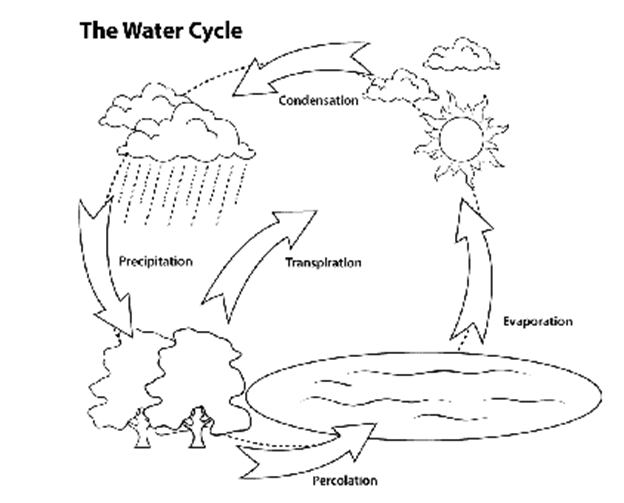- Books Name
- CBSE Class 7 Science Book
- Publication
- Param Publication
- Course
- CBSE Class 7
- Subject
- Science
1.6 Forms of water
Water can be found in all the three forms, i.e., solid, liquid and gas.
(i) Solid : It occurs in the form of snow, ice crystal, ice caps at the poles of the earth, snow covered mountains and glaciers.
(ii) Liquid : It occurs in the form of rain, oceans, lakes rivers and even ground water.
(iii) Gas : The gaseous form is the water vapour i.e., present in the air around us.
1.7 Water cycle

The supply of water in nature does not run out. This is because water is continuously recycled in the water cycle.
(i) Heat from the sun causes the water on the earth’s surface to evaporate. The vapour rises, cools and condenses to form tiny water droplets. These droplets form clouds.
(ii) The clouds get carried along by air currents. They cool and the droplets join to form larger drops.
These fall as rain.
(iii) If the temperature in the region is very low, these water droplets fall as hail, sleet or snow.
(iv) Some of the rain water flows along the ground as streams. Some soaks through the ground and then reappears as springs. Streams and springs join to form rivers. Rivers flow back into the sea. Thus, the water cycle is completed.

 Param Publication
Param Publication
